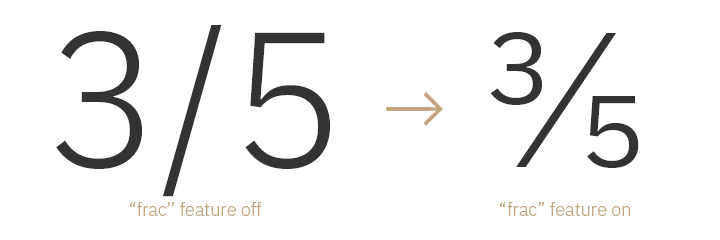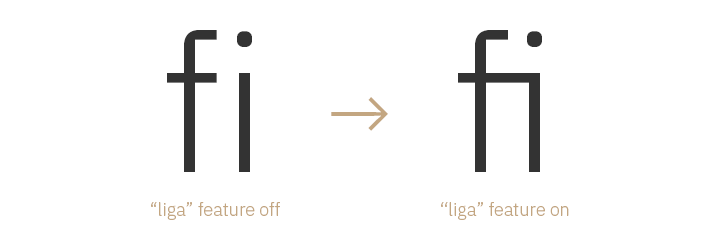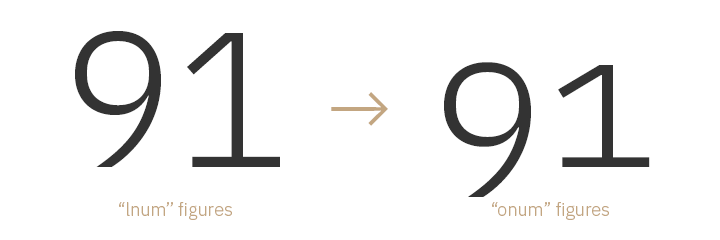

OpenType Features (OT Features) are a set of advanced typographic capabilities that are built into the OpenType font format. These features allow designers to create more sophisticated and refined text layouts, by providing access to a range of typographic tools and effects that are not available in traditional font formats.

has the expert knowledge needed to enhance fonts with OpenType Features that are just the right solution to your problem. Wether extending an existing typeface family or designing a new typeface from scratch – we’ll include the OpenType Features you need.
Benefit from our OpenType Features skills
OpenType Features are accessed either through design software, such as Adobe Photoshop or InDesign, or through CSS (Cascading Style Sheet) rules for the implementation of Webfonts on websites. OpenType Features can be applied to text in a number of different ways. For example, designers can use OpenType Features to automatically substitute specific character combinations, such as “fi” or “ff”, with a single ligature character that is designed to improve the readability and aesthetic of the text. They can also use contextual alternates to change the shape of certain characters based on the context in which they are used, such as automatically using a different form of the letter “a” when it appears at the end of a word.
In addition to these basic features, many OpenType fonts also include a range of alternate characters and glyphs, which can be accessed through stylistic sets. These allow designers to choose from a range of design options for each character, allowing for greater customization and creativity in their text layouts.

From a typographic viewpoint, OpenType Features can greatly improve digital typesetting: In the early days of digital text processing, fonts stored only a basic set of characters of a typeface, causing software to generate their own versions of special characters, such as subscript and superscript numbers. OpenType Features allow for the inclusion and replacement of this kind of special characters, improving digital typesetting and even surpassing the quality of traditional hand-setting.
Overall, OpenType Features provide designers with a powerful set of tools for creating sophisticated and refined text layouts. They are an essential part of modern typography, especially when they are combined with Variable Fonts.
While the scope of OpenType Features supported by a font is on the typeface designer’s hands, there are a number of commonly included OpenType Features that cover the most important typographic aspects:

This list is by far not comprehensive. OpenType Features can attend to all kinds of tasks, making them a great gain also for Custom or Corporate Typefaces and branding purposes: insertion of logos, help with typographically correct typesetting, and much more.
OpenType Features play an important role in supporting different scripts, let alone in multi-script fonts. Scripts are the written forms of different languages, and they can have unique typographic requirements that are not found in other scripts. The OpenType format includes support for many different scripts and their unique typographic requirements through the use of Unicode character encoding and features such as:
In summary, OpenType Features are critical for providing advanced typographic support for different scripts, such as ligatures, kerning, alternates, contextual alternates, and other typographic adjustments that are needed for different scripts, making the text more legible, aesthetically pleasing and fitting for the specific script.
As a small studio with a network of distinguished experts, combines the best of both worlds: we consult personally and promptly, are able to tackle projects of any size and charge reasonable rates.
Besides typeface design and technical font production, we also offer typographic and technical consulting. During online or on-site workshops, we share our expert knowledge with design colleagues.